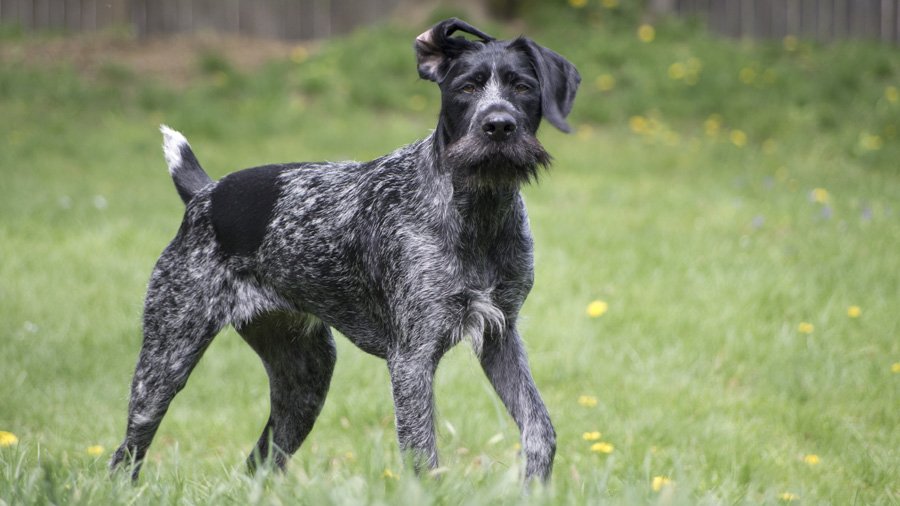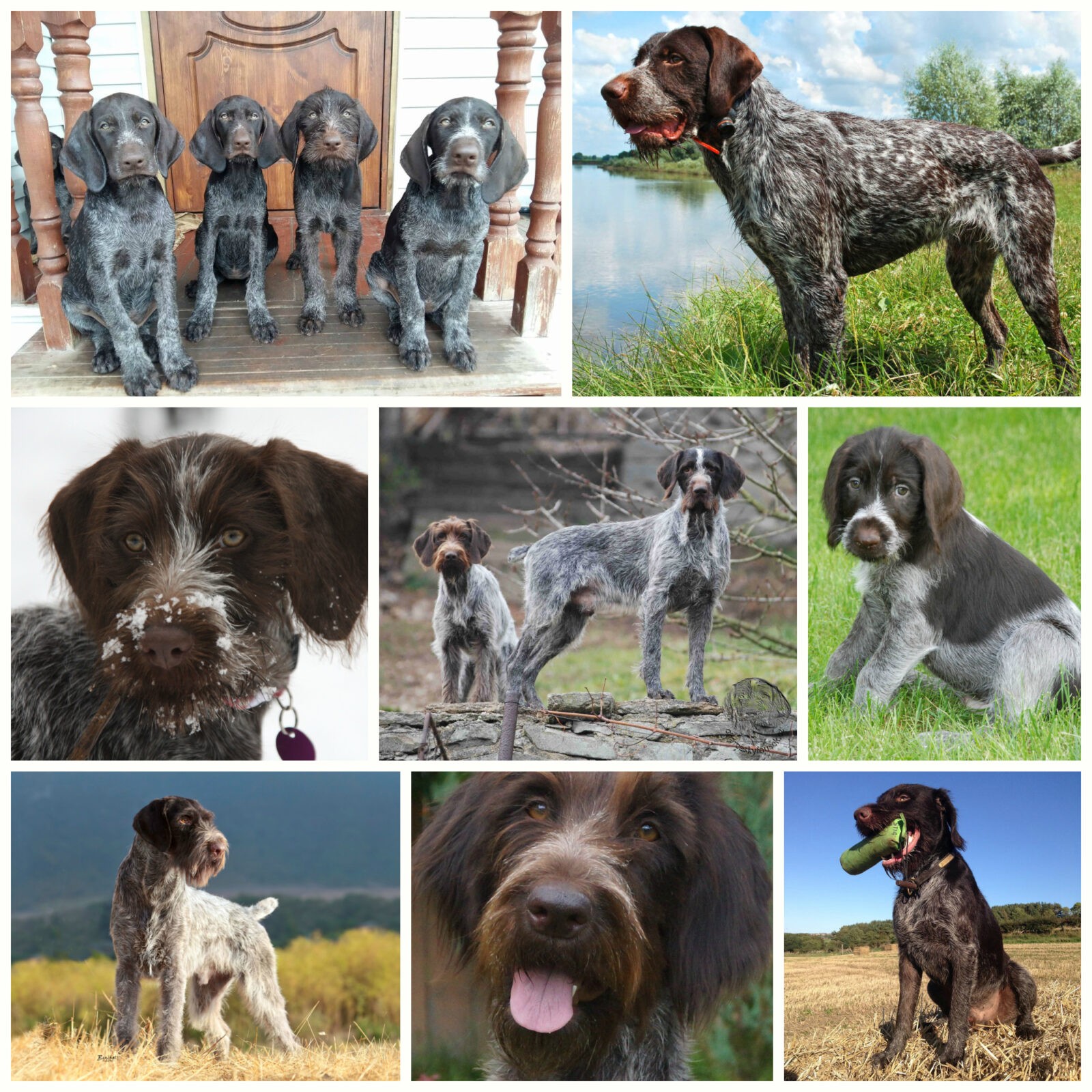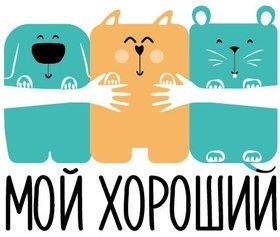Дратхаар, или немецкая жесткошерстная легавая, появился на рубеже 19 и 20 веков как универсальная охотничья собака. Эти собаки способны охотиться в любых условиях, на любой местности: на земле и на воде. Охотники всего мира особо ценят выносливость и чутье собак этой породы. Дратхаар подойдет для семей, которые ведут активный образ жизни и смогут обеспечить необходимые физические нагрузки для своего питомца, поэтому малоактивным людям, такая собака вряд ли будет по душе.

Краткое описание породы дратхаар
Дратхаар — охотничья собака средних размеров, способная охотиться на воде и на земле. Жесткая шерсть среднего размера, выносливость, острое обоняние, зрение и слух делают собаку непревзойденным охотником. Эти качества уже давно оценили охотники всего мира.
Внешними особенностями немецкой жесткошерстной легавой является бородка и торчащий купированный хвост. На своей родине, в Германии, эту собаку называют дратхааром. Порода была выведена специально для охоты в самых экстремальных условиях на все виды дичи.
Дратхаар, как и любая охотничья собака, требует особого обучения и воспитания. Эти собаки обожают бегать и плавать. Активность животного вызвана необходимостью реализовать весь свой физический потенциал. Немецкие жесткошерстные легавые, как любые другие собаки, обожают внимание и нежность со стороны хозяина.
Владельцы дратхааров должны обладать не только навыками общения с собаками, но также настойчивостью и терпением. Для того чтобы собака смогла принимать участие в различных соревнованиях по выполнению сложных команд, поиску, бегу необходимо постоянно развивать питомца посредством системных упражнений. По характеру эти собаки несколько упрямы. Поэтому целесообразно обращаться к специалистам для обеспечения правильной дрессировки и воспитания. Дратхаар не терпит агрессии и жесткости, которую необходимо исключить из процесса обучения. Главным условием успешного обучения является похвала и поощрение.
Не так давно кинологи выявили у этих собак невероятные способности по поиску и спасению людей. Поисково–спасательные склонности животного говорят о любви к человеку, которому животное оказывает неоценимую помощь.
Немецкая жесткошерстная легавая — это универсальная собака, которая может проявить себя как в соревнованиях и конкурсах, так и на охоте, а также на поприще спасения людей. Собака станет отличным другом, она с удовольствием составит компанию во время утренних пробежек, а также станет компаньоном при посиделках у костра. Дратхаар, при достаточном внимании и любви, станет настоящим членом вашей семьи!
Ласковая и преданная семье немецкая жесткошерстная легавая очень дружелюбна к людям, но осторожна к незнакомцам. Собаки этой породы, выращенные в кругу семьи полны любви ко всем ее членам, но с особым трепетом относятся лишь к хозяину. Дратхаар — это больше чем просто охотничья собака, она обожает общение с человеком, что делает ее настоящим членом семьи. Также представители этой породы являются непревзойденными сторожами. Эта собака — настоящий собственник, который беспокоится об имуществе хозяина. Она без страха проявляет агрессию в отношении посягателей. Вы можете быть уверены, что ваш питомец всегда защитит семью и дом, если они будут в опасности.
Ранняя социализация — обязательное условие в воспитании животных этой породы. Тренеры утверждают, что в обучении необходима сдержанная настойчивость. Резкое «нет» намного эффективнее грубости и агрессии. Относитесь с уважением к животному, и вы сразу увидите стремление собаки угодить вам.
Плюсы дратхаара
- Является универсальной охотничьей собакой;
- Прекрасный сторож и защитник;
- Сильно привязывается к владельцу;
- Умный, учится быстро и с большим желанием.
Минусы дратхаара
- Обладает сложным и независимым характером;
- Нуждается в опытном владельце;
- Требует большого количества движений;
- Практически не одобряет присутствие других животных в доме;
- Не переносит котов.
Основная информация
| Название породы: | Дратхаар |
| Страна происхождения: | Германия |
| Время зарождения породы: | XIX век |
| Тип: | легавые |
| Вес: | 20 – 32 кг |
| Рост (высота в холке): | 57 – 68 см |
| Продолжительность жизни: | 14 – 16 лет |
|
Классификация МКФ:
|
Группа 7, Секция 1, Номер 98 |
| Цена щенков: | 200 – 950 $ |
| Самые популярные клички: | список кличек для дратхаара |
Оценка характеристик породы дратхаар
| Адаптивность
(определение, означающее, насколько легко собака может приспосабливаться к изменениям в жизни) |
🐶🐶🐶🐶🐶 |
| Уровень линьки
(Уровень и частота выпадения волос у животного) |
🐶 |
| Уровень нежности
(Уровень и количество нежности и ласки, которую собака отдает взамен на внимание к себе) |
🐶🐶🐶🐶🐶 |
| Потребности в упражнениях
(Уровень дневной активности собаки) |
🐶🐶🐶🐶🐶 |
| Социальная потребность
(Необходимое количество контактов собаки с другими животными, а также людьми) |
🐶🐶🐶 |
| Квартирное содержание
(Фактор, определяющий уровень шума и иных неудобств, которые собака может доставлять хозяевам в соотношении размера квартиры к размеру собаки) |
🐶 |
| Груминг
(Количество купаний, расчесываний, а также необходимое количество сеансов профессионального груминга, необходимого собаке) |
🐶🐶 |
| Дружелюбность в незнакомой среде
(Особенности поведения собаки в обществе с незнакомыми людьми или в незнакомой обстановке) |
🐶🐶🐶 |
| Тенденция к лаю
(Склонность к лаю и его частоте и громкости) |
🐶🐶🐶 |
| Вопросы здоровья
(Потенциальный уровень состояния здоровья собаки) |
🐶🐶 |
| Территориальность
(Склонность собаки к защите своего дома, двора или даже автомобиля хозяина) |
🐶🐶🐶🐶 |
| Дружелюбность к котам
(Тенденция к терпимости к кошкам и пониженное проявление охотничьих инстинктов) |
🐶 |
| Интеллект
(Способность собаки к мышлению и решению возникающих трудностей (не стоит путать с обучаемостью!) |
🐶🐶🐶🐶🐶 |
| Воспитание и дрессировка
(Уровень сложности в обучении собаки выполнять определенные действия) |
🐶🐶🐶🐶🐶 |
| Дружелюбность к детям
(Фактор, определяющий насколько собака дружелюбна к детям, любит ли она с ними играть и терпеть некоторые детские шалости) |
🐶🐶🐶🐶 |
| Игровая активность
(Понятие определяется самим его названием, и, как правило, встречается почти у всех собак) |
🐶🐶🐶🐶 |
| Наблюдательность
(Способность собаки определить присутствие чужого на своей территории) |
🐶🐶🐶🐶🐶 |
| Дружелюбность к другим собакам
(Склонность собаки находить общий язык с другими своими сородичами) |
🐶🐶🐶🐶🐶 |
Внешний вид дратхаара
Жесткошерстный дратхаар относится к крупным, но не тяжеловесным, собакам со спортивным и атлетическим телосложением. Силуэт вписывается в квадрат, позвоночник короткий и прямой, грудная клетка широкая, но не глубокая. Конечности сильно мускулистые. Хвост носится низко, скручен наполовину, однако может носится и на уровне позвоночника, в те моменты, когда собака чем-либо заинтересована. Голова сухая, выглядит благородно, носится на сильно мускулистой шее. Глаза среднего размера, коричневые, с дружелюбным выражением. Уши высоко посажены, средней длины, широкие, на концах закругленные, ровно прилегают к щекам. Высота в холке: кобели 61–68 см, суки 57–64 см. Масса тела: кобели 25–32 кг, суки 20–27 кг.
Фото дратхаара:

История происхождения дратхаара
Порода была выведена в процессе активного поиска универсального охотника, способного помогать охотиться на различных животных. Появился дратхаар в 1800-х годах. Эта собака объединила в себе качества легавой, пуделя и фоксхаунда, благодаря чему животное отлично себя чувствует в воде и на земле.
Не стоит путать дратхаар с курцхааром. В отличии от последнего, дратхаар имеет более длинную шерсть, другую форму головы и совершенно иной темперамент. Хотя внешне и есть определенные сходства, все же выведены они были отдельно и с разных пород собак.
Характер дратхаара
Дратхаары имеют прекрасный характер, они ласковы и преданны своей семье. Они дружелюбны, но с настороженностью относятся к незнакомцам. Когда питомец вырос в любящей семье, он будет с особым трепетом относится ко всем ее членам. Вот почему внимание так важно не только животному, но и вам. Дратхаар — это больше чем просто охотничья собака. Она обожает человеческое общение, что делает из нее отличную семейную собаку.
Из собак этой породы получаются отличные сторожа. У питомца четко проявляется чувство собственности, поэтому дратхаар будет до последнего защищать имущество от посягателя. Но, чтобы собака обладала вышеупомянутыми качествами, необходимо проводить ее раннюю социализацию. В процессе этого полностью откажитесь от агрессии. Настойчивость – вот ваше главное оружие.
Содержание и уход
Взрослый дратхаар требует к себе не так уж много внимания. Главное — ухаживать еженедельно за шерстью, тщательно ее вычесывать, так как эти собаки линяют круглый ход. Тщательно вычесывание волос позволяет не только предотвратить появление шерсти в доме, но и держит животное в чистоте.
Купать собаку необходимо только в случае необходимости. Молодые щенки могут обладать мягкой шерстью, которая требует к себе больше внимания. Но по мере взросления шерсть будет становиться все жестче. В период линьки, особенно весной, вам потребуется чаще вычесывать шерсть питомца.
Еженедельно проверяйте уши домашнего любимца. Это нужно для того, чтобы своевременно выявлять признаки инфекции или воспаления. Обрабатывают уши специальным раствором по рекомендации ветеринара, с помощью специального тампона с мягкой ткани.
Подстригают когти обычно раз в месяц, но если они быстро растут, то процедуру можно осуществлять чаще. К еженедельным обязательным процедурам относится чистка зубов. Это предотвратит возникновение проблем с зубами и будет гарантией свежего дыхания вашего дратхаара.
Дрессировка и обучение
Дратхаар — это сильная, волевая и независимая собака. Поэтому процесс дрессировки и обучения может стать проблемой для неподготовленного собаковода. Эти собаки нуждаются в уверенном в себе, настойчивом хозяине, обладающем лидерскими качествами. Если вы хотя бы раз уступите питомцу, то о результативности обучения можете забыть. Занятия не должны быть длинными, иначе они быстро надоедят собаке.
Собаки этой породы получают удовольствие от упражнений, связанных со смекалкой и физической нагрузкой. В последнее время их часто используют в различных поисково-спасательных операциях. Таким образом, животные реализуют свою поисковую потребность, присущую всем охотничьим собаками. Дрессировка дратхаара может занять до полугода. В некоторых случаях этот срок может быть немного короче. Но лучше проводить обучение поэтапно.
Здоровье и болезни
Несколько интересных фактов
- Эта собака достаточно самостоятельная и независимая. Довольно часто замечается склонность к бродяжничеству, но это случается при недостаточном внимании со стороны хозяина.
- Представители этой породы очень подозрительно относятся к незнакомцам и проявляют преданность своей семье.
- Если собаку оставлять слишком долго в одиночестве, то у животного развивается большой страх разлуки с хозяином.
- В домашних условиях тренировать представителей этой породы непросто.
- Иногда дратхаары проявляют агрессию к другим собакам, особенно к самцам.
- Большинство собак этой породы любят гоняться за котами и другими маленькими животными.
- Молодой дратхаар в возрасте до двух лет обожает резвиться, бегать и прыгать. Будьте готовы к возможным повреждениям мебели или предметов декора.
Питомники и заводчики
Материал мы заимствовали с замечательного сайта наших партнеров DOGCATFAN.COM о кошках и собаках, автор dogcatfan
